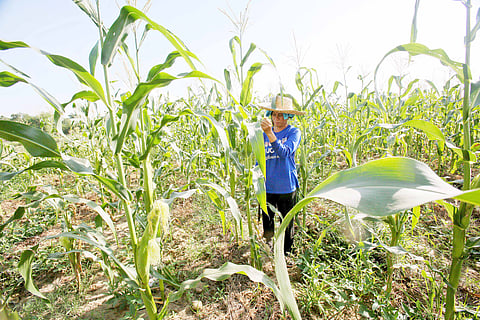
- HEADLINES
- NEWS
- PAGE THREE
- COMMENTARY
- BUSINESS
- LIFE
- ACTION
- GLOBAL GOALS
- SNAPS
- DYARYO TIRADA
- AIF
- MORE

The latest report from the Philippine Atmospheric, Geophysical, and Astronomical Services Administration (PAGASA) shows that some thirty-one localities in the country are predicted on Tuesday to have an 'init factor' belonging to a dangerous level.
The highest heat index, peaking at 47°C, is expected in Dagupan City in Pangasinan and Aparri in Cagayan.
Meanwhile, 44°C is predicted in Laoag City in Ilocos Norte, Bacnotan in La Union, San Jose in Occidental Mindoro, Cuyo in Palawan, Virac (Synop) in Catanduanes, Roxas City in Capiz, and Guiuan in Eastern Samar, and 43°C in Tugegarao City in Cagayan, Puerto Princesa City in Palawan, Iloilo City and Dumangas in Iloilo, and Catbalogan City in Samar.
Sinait in Ilocos, Mariano Marcos State University (MMSU) in Batac, Ilocos Norte, Isabela State University in Echague, Isabela, Clark International Airport in Pampanga, Central Luzon State University (CLSU) in Muñoz, Nueva Ecija, Casiguran in Aurora, Cubi Point in Subic Bay, Ambulong in Tanauan, Batangas, Coron, and Aborlan in Palawan, Daet in Camarines Norte, Legazpi City in Albay, Masbate City in Masbate, Central Bicol State University of Agriculture (CBSUA) in Pili, Camarines Sur, Catarman in Northern Samar, Tacloban City in Leyte, and Borongan in Eastern Samar, on the other hand, are forecast to have their temperature reaching the highest at 42°C.
Baguio City and Benguet State University in La Trinidad, Benguet, have the lowest heat index at 28°C.
A temperature of 31°C is also expected in Tanay, Rizal.
The heat index is the human discomfort index that gives the "apparent" temperature, or what humans perceive or feel as the temperature affecting their body, as defined by PAGASA, which has four effect-based classifications: caution (27°C to 32°C), extreme caution (33°C to 41°C), danger (42°C to 51°C), and extreme danger (52°C and beyond).
The effect-based danger classification effects on the body are that heat cramps and exhaustion are likely, and heat stroke is probable with continued exposure.
The public is encouraged to take preventive measures against heat-related illnesses, whose symptoms include sweating heavily, exhaustion, dizziness, blacking out, vomiting, a feeling of nausea, and weakness despite a fast pulse, urging people to limit time spent outdoors, drink plenty of water, and wear protective and comfortable clothing outdoors.
